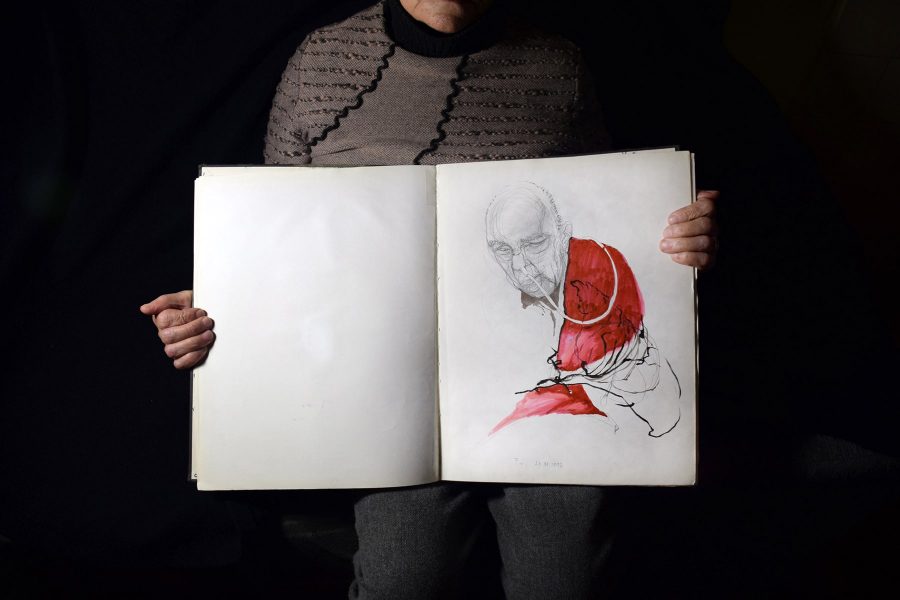Drawing the Loss of Movement
INTERNATIONAL PAPER
ALMEIDA, Paulo Luís. (2022). Drawing the Loss of Movement – Embodiment and Representation of a Parkinson’s Patient. Tracey – Drawing and Visualization Research, 16(1), p. 1-13, ISSN 1742-3570.
Available at: https://ojs.lboro.ac.uk/TRACEY/article/view/2902
This paper is a reflective review on the experience of drawing my father during his last years with Parkinson’s disease, as a framework to address the role of embodiment in drawing. More than a record of the body, drawing someone with Parkinson’s disease is primarily to report a paradox: making visible the loss of movement and expression, but also the erosion of language and the disappearance of the other person’s world. It is argued that drawing allows to intimate this loss as an affect and an event, an emotion and a process, as the drawing act defies telling and incites a memorialising function of the trace.
As a projection of a moving body representing another body, drawing a Parkinson’s patient triggers the experience of empathy as a shared representation, which enable us to perceive the other’s experience within our own corporality. Empathy is addressed as part of the perceptual experience of drawing, but also as apperception: a co-apprehension of the other’s emotion through his movements and expressions over time, blending direct observations and recalled images. As the enactment of a relationship, drawing is a coming together with the world, an “as-if-body-loop”.
KEYWORDS: Drawing, Empathy, Embodiment, Parkinson’s Disease, Loss.






